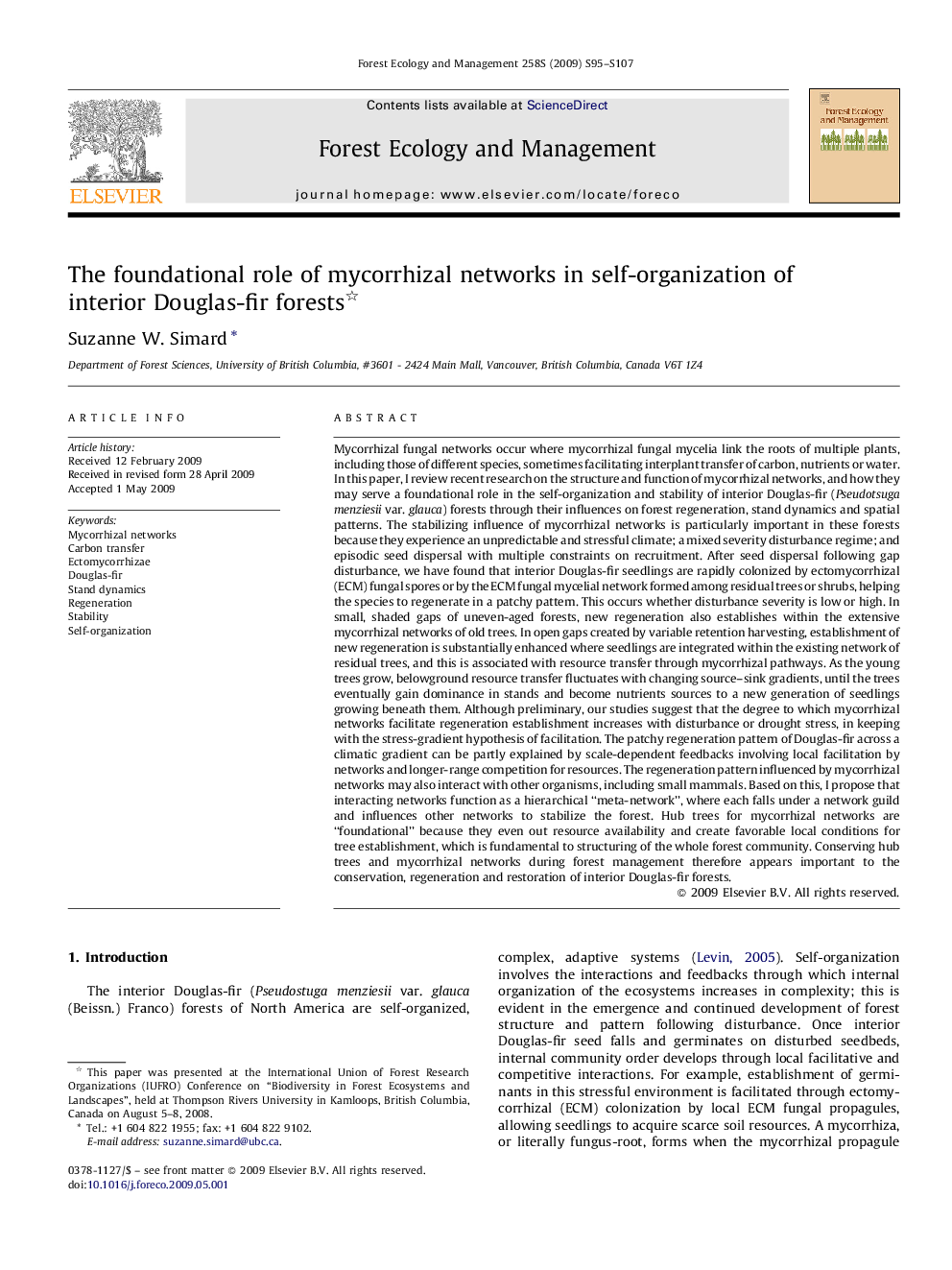| کد مقاله | کد نشریه | سال انتشار | مقاله انگلیسی | نسخه تمام متن |
|---|---|---|---|---|
| 88369 | 159300 | 2009 | 13 صفحه PDF | دانلود رایگان |

Mycorrhizal fungal networks occur where mycorrhizal fungal mycelia link the roots of multiple plants, including those of different species, sometimes facilitating interplant transfer of carbon, nutrients or water. In this paper, I review recent research on the structure and function of mycorrhizal networks, and how they may serve a foundational role in the self-organization and stability of interior Douglas-fir (Pseudotsuga menziesii var. glauca) forests through their influences on forest regeneration, stand dynamics and spatial patterns. The stabilizing influence of mycorrhizal networks is particularly important in these forests because they experience an unpredictable and stressful climate; a mixed severity disturbance regime; and episodic seed dispersal with multiple constraints on recruitment. After seed dispersal following gap disturbance, we have found that interior Douglas-fir seedlings are rapidly colonized by ectomycorrhizal (ECM) fungal spores or by the ECM fungal mycelial network formed among residual trees or shrubs, helping the species to regenerate in a patchy pattern. This occurs whether disturbance severity is low or high. In small, shaded gaps of uneven-aged forests, new regeneration also establishes within the extensive mycorrhizal networks of old trees. In open gaps created by variable retention harvesting, establishment of new regeneration is substantially enhanced where seedlings are integrated within the existing network of residual trees, and this is associated with resource transfer through mycorrhizal pathways. As the young trees grow, belowground resource transfer fluctuates with changing source–sink gradients, until the trees eventually gain dominance in stands and become nutrients sources to a new generation of seedlings growing beneath them. Although preliminary, our studies suggest that the degree to which mycorrhizal networks facilitate regeneration establishment increases with disturbance or drought stress, in keeping with the stress-gradient hypothesis of facilitation. The patchy regeneration pattern of Douglas-fir across a climatic gradient can be partly explained by scale-dependent feedbacks involving local facilitation by networks and longer-range competition for resources. The regeneration pattern influenced by mycorrhizal networks may also interact with other organisms, including small mammals. Based on this, I propose that interacting networks function as a hierarchical “meta-network”, where each falls under a network guild and influences other networks to stabilize the forest. Hub trees for mycorrhizal networks are “foundational” because they even out resource availability and create favorable local conditions for tree establishment, which is fundamental to structuring of the whole forest community. Conserving hub trees and mycorrhizal networks during forest management therefore appears important to the conservation, regeneration and restoration of interior Douglas-fir forests.
Journal: Forest Ecology and Management - Volume 258, Supplement, 14 December 2009, Pages S95–S107